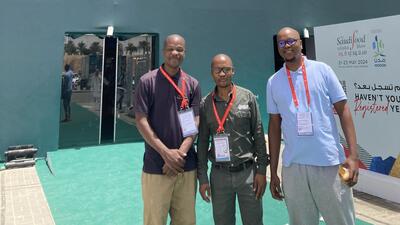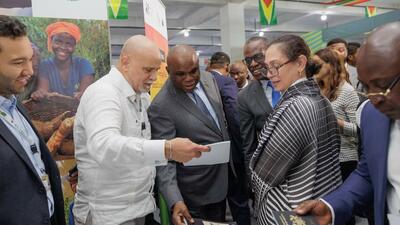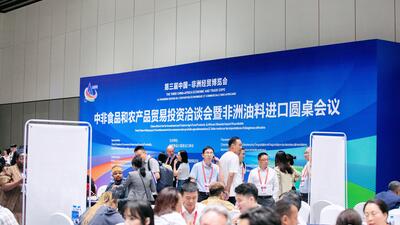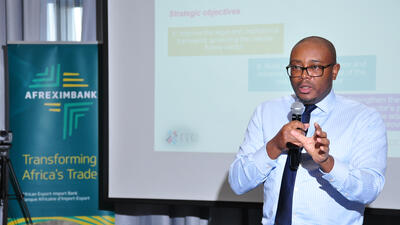Leveraging the right kind of trade and investment
Historical and contemporary experiences show that international trade can play a critical role in accelerating economic and social development. The track record of East Asian economies, in particular, emphasizes its key contribution to achieving high and sustained economic growth. Many of these countries went from being poor developing countries to high-income countries within a generation. The rapid tradefuelled growth of emerging economies such as China, Brazil and India also lends support to the argument that trade can stimulate economic growth, generate productive employment, and reduce poverty levels. Even poorer developing countries such as Bangladesh, Ethiopia, Ghana and Vietnam have recently benefited from stronger trade performance.
These experiences also point to another important lesson: that trade (and investment) policies have been most effective when they have contributed to the structural transformation of the domestic economy. Among these are Yurendra Basn ett Research Fellow Overseas Development Institute Pedro Martins Research Fellow H policies that guide the economy towards higher levels of productivity (while creating productive jobs), which in turn contribute to a sustained increase in living standards. The importance of this transformative process cannot be overstated, since the poorest countries are often characterized by many dependencies – of commodities, limited export markets, foreign aid and technologies. Overcoming these challenges will require meaningful structural change. Trade and investment expand market opportunities, force production processes to become more efficient, and provide financial and technological resources to expand production capabilities. Still, trade and investment policies in isolation do not necessarily encourage structural transformation. Their role needs to be embedded within a development strategy that is geared towards inter- and intra-structural transformation of the economy.
In thinking about a post-2015 development agenda, the European Report on Development 2013 focused on three key international drivers of development: trade and investment, development finance and migration. The report by the Overseas Development Institute, the European Centre for Development Policy Management and the German Development Institute, Post- 2015: Global Action for an Inclusive and Sustainable Future, highlights two of the key weaknesses of the current framework, the Millennium Development Goals (MDGs): (1) the instruments (MDG 8) to deliver on the key outcomes (MDGs 1 to 7) remain largely unmet – some might even be misplaced – and, (2) by focusing primarily on the social sectors, the framework neglects the fundamental importance of improving the productive capacities of societies – an imperative for raising levels of well-being. Consequently, the sustainability of the achievements of the MDG enterprise is questionable. The emerging global dialogue on a post-2015 framework should therefore learn from the experience of the MDGs, while also taking into consideration the rapidly changing global economic and political context. A future framework needs to be grounded in a transformative vision of development – underpinned by the need to transform economic and social structures – with a view to ensuring a more inclusive and sustainable development path.
So what can be done to leverage the potential of international trade and foreign investment?
The role of the StateThe productive capacity of poor economies remains weak and underdeveloped, which in turn limits their ability to benefit from an expanding global market. Much of the recent policy focus has been on increasing the ‘supply- side’ capacity of such economies, which usually means producing more of the same. This cannot be counted as being developmental. What is required is a shift towards increasing the productive capacity, in particular the productivity, of these economies. This will involve dynamically transforming existing comparative advantages.
The State, with its many limitations and failures, needs to be part of the solution. Strategic public investments in economic infrastructure and skills development are fundamental to nurturing a thriving private sector. Moreover, technology is critical to increasing productivity, as well as to ensuring environmental sustainability. The focus on increasing productive capacities, the role of the State and technology remain largely missing from the global development policy agenda.
Global governanceThe governance of global trade flows remains a Hobbesian world (i.e. a state of anarchy), at least when viewed from, say, Kathmandu or Maputo. The World Trade Organization agreements, notwithstanding their limitations, were beginning to provide some structure to the chaos. But that process has stalled. A world without an active and pragmatic multilateral framework is likely to undermine and further marginalize the poorest economies. When compared to bilateral and regional approaches, a multilateral process can be more inclusive and dilute power hierarchies, while the outcomes are less likely to marginalize the interests of small and weak economies. But the value of multilateralism will not be in the rhetoric it champions, but the problems it solves. Here, because of the dogmatic belief in ‘liberalization’ (it can be at times instrumental, but not ubiquitously), multilateralism has been constantly unable to solve problems and deliver change.
The world that we are soon embarking on will be defined by current shifts in the global economy. This will in turn reorient the flows of goods and services, whether for production or consumption. It is futile to predict how things will look, as change is continuous. What is clear is that most economies will increasingly find themselves involved in tasks along a production chain, as opposed to producing and selling final products, as it occurred in the past. This is perhaps a natural progression of the global division of production processes, facilitated by specialization and technology.
Key elements for a post-2015 agendaIn the European Report on Development 2013, we discuss some practical elements that could be considered in a post-2015 development framework – with a view to supporting economic diversification and structural transformation in the poorest countries. Some of the key measures that the international community should consider include:
- Promoting modern-sector exports by making trade preferences more effective – e.g. reforming rules of origin, addressing non-tariff barriers, and boosting Aid for Trade.
- Reducing vulnerabilities to external shocks by developing more effective and responsive mechanisms – for example schemes to reduce commodity price volatility and contingency facilities to mitigate income shocks.
- Enhancing the impact of foreign investment through policies that encourage investments in sectors with strong employment and productive growth potential.
The successor to the MDGs cannot be expected to solve all the problems of the world economy. But without significant progress on key areas of international cooperation – including trade and investment – the inclusive and sustainable vision espoused by the Millennium Declaration will remain a distant illusion. What the post-2015 debate can feasibly do is to stimulate a constructive policy dialogue and provide positive momentum towards achieving a progressive agreement on a few vital areas. Between the Hobbesian chaotic world of selfinterest and the powerful Leviathan, there is ample scope for global collective action.















